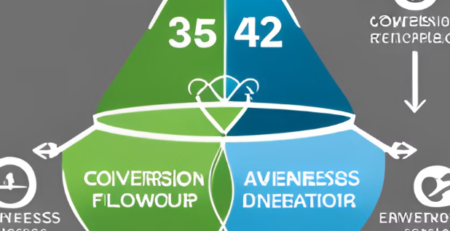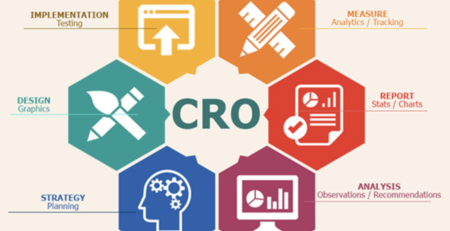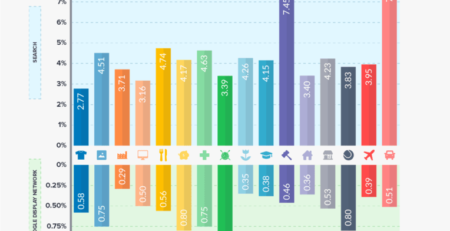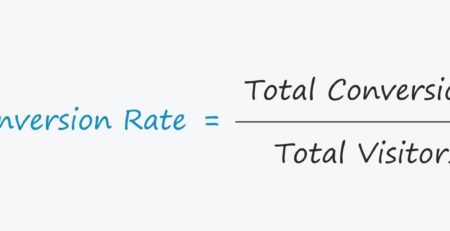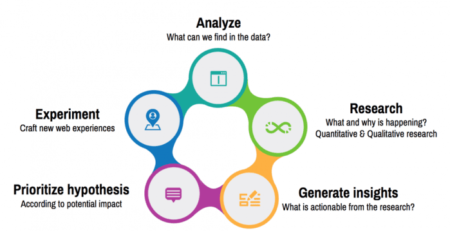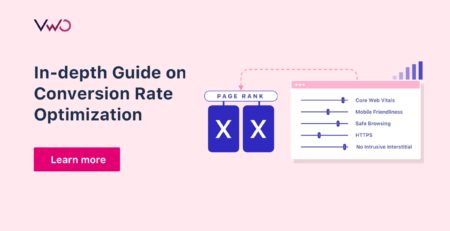Who Invented Conversion Rate Optimization?
Did you know that behind every successful online business lies a strategy known as conversion rate optimization? But have you ever wondered who came up with this brilliant concept? Well, you’re in luck! In this article, we’ll delve into the origins of conversion rate optimization and uncover the mastermind behind its invention. So, join us on this journey as we explore the fascinating history of this game-changing strategy.
Picture this: You’re exploring the vast world of online marketing, searching for ways to improve your website’s performance. That’s when you stumble upon the term “conversion rate optimization.” But who exactly came up with this ingenious idea? Well, let’s travel back in time and uncover the story behind its inception.
In the realm of digital marketing, there are countless strategies and techniques that have shaped the industry. However, conversion rate optimization stands out as a game-changer. So, who deserves the credit for this brilliant concept? Keep reading to find out the fascinating story behind the invention of conversion rate optimization.
Who Invented Conversion Rate Optimization?
Conversion Rate Optimization (CRO) is a critical aspect of digital marketing, but have you ever wondered who pioneered this field? In this article, we’ll explore the origins of CRO, examine the key players in its development, and discuss their contributions. Let’s delve into the fascinating history of CRO and discover the innovators who shaped the way we optimize website conversions.
The Early Days of Conversion Rate Optimization
The concept of optimizing website conversions can be traced back to the early days of internet marketing. In the late 1990s and early 2000s, businesses started recognizing the importance of maximizing the value they derived from their websites and online presence. However, the term “Conversion Rate Optimization” hadn’t yet been coined, and the practice was still in its infancy.
During this period, several marketers and industry pioneers laid the groundwork for what would later become known as CRO. These early adopters experimented with different strategies to improve website conversions, although they lacked the sophisticated tools and technologies available today. Despite the limitations, these visionaries played a crucial role in shaping the field of CRO and paving the way for future advancements.
One of the key figures during these formative years was Tim Ash, who is often referred to as the “father of conversion optimization.” In 2000, Ash founded SiteTuners, a conversion rate optimization agency that provided consultation and expertise to businesses seeking to improve their online conversion rates. His groundbreaking book, “Landing Page Optimization,” published in 2008, further solidified his influence in the field.
The Rise of A/B Testing
As the internet matured, so did the techniques and tools used in CRO. The introduction of A/B testing revolutionized the field, enabling marketers to scientifically measure the impact of different website elements on conversion rates. A/B testing involves comparing two versions of a webpage or an element within a webpage to determine which one performs better.
One of the pioneers of A/B testing in CRO was Bryan Eisenberg, a digital marketing expert, and entrepreneur. In his book, “Always Be Testing,” Eisenberg emphasized the importance of continuously experimenting and optimizing websites to maximize conversions. Eisenberg, along with his brother Jeffrey, started Future Now Inc., a company that focused on helping businesses improve their online marketing performance through data-driven strategies.
Another influential figure in the rise of A/B testing was Chris Goward, the founder and CEO of WiderFunnel. Goward developed a methodology called the “LIFT Model,” which stands for Lead, Idea, Form, and Test. This framework provided a systematic approach to optimization and helped businesses generate more leads and sales through their websites. Goward’s contributions to the field of CRO earned him recognition as one of the top thought leaders in the industry.
The Emergence of Conversion Rate Optimization as a Discipline
As CRO gained traction as a critical discipline in digital marketing, organizations began investing more resources into optimizing conversions. This led to the establishment of dedicated CRO agencies and the development of advanced tools specifically designed for conversion optimization.
One such agency is Conversion Rate Experts, founded by Dr. Karl Blanks and Ben Jesson. Conversion Rate Experts gained widespread recognition for its expertise in helping companies achieve significant improvements in their conversion rates. Blanks and Jesson authored the best-selling book, “Making Websites Win,” which provided actionable insights and a systematic framework for optimizing conversions.
Another influential individual in the field of CRO is Oli Gardner, the co-founder of Unbounce, a leading landing page builder platform. Gardner has been a vocal advocate for CRO, emphasizing the importance of creating effective landing pages that drive conversions. His contributions, including extensive research and published articles, have been instrumental in advancing the field of CRO.
Continued Evolution and Advancements in CRO
Since its early beginnings, CRO has continued to evolve and adapt to the changing landscape of digital marketing. Today, there are countless experts, agencies, and tools dedicated to helping businesses optimize their website conversions. The field has expanded beyond just A/B testing to include multivariate testing, personalization, user research, and data analysis.
One notable figure who has contributed significantly to the evolution of CRO is Peep Laja, the founder of CXL, a renowned online learning platform for conversion optimization. Laja has been at the forefront of promoting evidence-based marketing and using data-driven approaches to achieve conversion optimization. His expertise and educational resources have made him a trusted authority in the field.
In conclusion, Conversion Rate Optimization is a field that has evolved significantly over the years, thanks to the contributions of several influential individuals. From pioneers like Tim Ash to modern-day experts like Peep Laja, these innovators have shaped the way we optimize website conversions. With ongoing advancements and a growing emphasis on data-driven strategies, the field of CRO shows no signs of slowing down.
Benefits of Conversion Rate Optimization
Conversion Rate Optimization (CRO) offers a multitude of benefits for businesses looking to maximize their website’s potential. By implementing effective CRO strategies, companies can enhance user experiences, increase conversion rates, and ultimately drive higher revenue. Let’s explore some of the key benefits of CRO:
1. Improved User Experience and Satisfaction
One of the primary goals of CRO is to enhance the user experience on a website. By optimizing various elements such as design, navigation, and content, businesses can make their websites more user-friendly, intuitive, and engaging. A seamless user experience not only leads to higher conversion rates but also fosters customer satisfaction and loyalty.
A well-optimized website will load quickly, provide relevant information, and guide users seamlessly through the conversion funnel. When visitors can easily find what they’re looking for and have a positive interaction with a website, they are more likely to complete a desired action, whether it’s making a purchase, signing up for a newsletter, or filling out a form.
Moreover, a positive user experience has ripple effects that extend beyond individual conversions. Satisfied customers are more likely to recommend a business to others, leading to increased brand awareness and organic growth through word-of-mouth.
2. Increased Conversion Rates and Revenue
CRO is all about optimizing every step of the conversion process to maximize the number of visitors who take a desired action. By making data-driven improvements to a website, businesses can increase the conversion rate and generate more leads, sales, or subscriptions.
Even a small increase in conversion rate can have a significant impact on a company’s bottom line. By optimizing conversion rates, businesses can boost their revenue without necessarily increasing their marketing spend. Instead of solely focusing on driving more traffic to a website, CRO allows businesses to extract greater value from their existing traffic by converting a higher percentage of visitors into customers.
Additionally, CRO helps identify the key bottlenecks in the conversion funnel, enabling businesses to make targeted improvements. By addressing specific pain points or barriers that may be hindering conversions, businesses can unlock their website’s full potential and achieve optimal conversion rates.
3. Data-Driven Decision Making
An essential aspect of CRO is collecting and analyzing data to inform optimization strategies. CRO relies on metrics and analytics to understand user behavior, identify patterns, and make data-driven decisions.
Through A/B testing, businesses can test different variations of elements on their website and measure their impact on conversion rates. This experimentation allows companies to uncover insights about their target audience, preferences, and behaviors. The data collected through CRO initiatives provides valuable insights that can be applied to inform marketing strategies, product development, and overall business decisions.
By leveraging data, businesses can make informed optimization choices, eliminating guesswork and reducing the risk of investing resources into ineffective strategies. This data-driven approach allows businesses to continuously refine and improve their conversion rates, staying ahead of the competition and adapting to changing market dynamics.
The Role of A/B Testing in Conversion Rate Optimization
A/B testing is a powerful technique in Conversion Rate Optimization (CRO) that allows businesses to systematically test different variations of webpages or specific elements to determine which ones lead to the highest conversion rates. By comparing two versions (A and B) and measuring the performance of each, businesses can make data-driven decisions to optimize conversions. Let’s explore the role of A/B testing in CRO and its benefits:
Understanding A/B Testing
A/B testing involves dividing website visitors into two groups: one exposed to version A (the original or control), and the other exposed to version B (the variation or test). Both versions differ in a specific element or set of elements being tested. For example, a business may test different headlines, calls-to-action, button colors, or layouts.
During the test period, metrics such as conversion rate, bounce rate, average session duration, or any other relevant engagement metric are measured and compared between the control and test groups. The results are then analyzed to determine which version performs better based on predefined objectives: increased sales, sign-ups, downloads, or any other desired actions.
The Benefits of A/B Testing
A/B testing offers several benefits that contribute to the success of a Conversion Rate Optimization strategy:
1. Data-Driven Decision Making
One of the primary advantages of A/B testing is its reliance on data. By collecting and analyzing quantitative data, businesses can make informed decisions based on objective insights rather than subjective opinions or assumptions. A/B testing eliminates guesswork and enables businesses to understand what truly resonates with their target audience.
Data from A/B tests provides actionable insights into user behavior and preferences. For example, businesses can uncover which headlines generate more clicks, which color schemes lead to higher conversions, or which page layouts result in longer engagement. By implementing the winning variations, businesses can maximize their chances of achieving their conversion goals.
2. Incremental Improvements
A/B testing allows businesses to make incremental improvements to their websites or landing pages. Rather than implementing drastic changes based on hunches, A/B testing focuses on testing and optimizing one specific element at a time.
Incremental improvements are especially valuable because they help businesses understand the direct impact each change has on conversion rates. By breaking down the optimization process into smaller, manageable tasks, businesses can measure the effectiveness of each variation and fine-tune their approach based on the results.
3. Continuous Optimization
A/B testing lays the foundation for continuous optimization. By regularly testing and refining website elements or designs, businesses can continuously improve their conversion rates, even after achieving initial successes.
Optimization is an iterative process, and businesses that embrace continuous testing and experimentation gain a competitive advantage. CRO is not a one-time effort but an ongoing commitment to data-driven improvements. A/B testing allows businesses to stay agile, adapt to changing market dynamics, and meet the evolving needs of their target audience.
Tips for Effective Conversion Rate Optimization
Effective Conversion Rate Optimization (CRO) requires a strategic and systematic approach. By following best practices and implementing proven techniques, businesses can maximize their chances of success and achieve significant improvements in their conversion rates. Here are some tips for effective CRO:
1. Set Clear Conversion Objectives
Before starting any CRO initiatives, it is essential to define clear and actionable conversion objectives. What specific actions do you want your website visitors to take? Whether it’s making a purchase, signing up for a newsletter, or filling out a contact form, clearly outlining your conversion goals will help align your optimization efforts.
By setting specific conversion objectives, businesses can track and measure the success of their optimization strategies. Having a clear target in mind helps prioritize the optimization tasks and ensures that all efforts are focused on achieving the predefined goals.
2. Understand Your Target Audience
Conversion Rate Optimization is only effective if it caters to the needs, preferences, and behaviors of your target audience. To optimize conversions, businesses must deeply understand their target audience, including their demographics, motivations, pain points, and decision-making processes.
Conducting user research, analyzing customer data, and gathering feedback are essential steps in understanding your target audience. By gaining insights into their needs and preferences, businesses can tailor their CRO strategies to deliver a personalized and relevant user experience.
3. Leverage Data and Analytics
Data is at the core of successful CRO. Leveraging data and analytics tools allows businesses to gain insights into user behavior and make informed optimization decisions. Collecting and analyzing data related to website performance, user journeys, traffic sources, and conversions is crucial for identifying areas for improvement.
Implementing tracking tools such as Google Analytics or heat maps can provide valuable information about user interactions, click behavior, and areas of drop-off. By using data to identify pain points and areas of opportunity, businesses can optimize their websites strategically.
4. Test and Iterate
Testing should be an integral part of any Conversion Rate Optimization strategy. Implementing A/B tests or multivariate tests helps measure the impact of different variations on conversion rates. By testing one element at a time, businesses can determine what resonates best with their audience and make data-driven decisions.
Continuous testing and iteration are essential for ongoing optimization. As market dynamics change and user preferences evolve, it is necessary to stay agile and adapt your optimization strategies accordingly. Regularly testing and refining critical elements such as headlines, calls-to-action, or page layouts allows businesses to optimize continuously and stay ahead of the competition.
5. Provide a Seamless User Experience
The user experience plays a vital role in converting website visitors into customers. Ensuring a seamless and intuitive user experience is key to optimizing conversions. Focus on improving website navigation, page load times, responsiveness, and overall design aesthetics.
Streamline the conversion process by minimizing the number of steps required to complete a desired action. Clear and persuasive calls-to-action, prominent trust indicators, and optimized landing pages contribute to a positive user experience and can significantly impact conversion rates.
6. Monitor and Measure Performance
Monitoring and measuring the performance of your CRO efforts is crucial for ongoing optimization. Track key metrics and conversion goals to evaluate the impact of your optimization strategies. Monitor conversion rates, bounce rates, average session duration, and other relevant engagement metrics.
Regularly review and analyze the data to identify trends, patterns, and opportunities for improvement. This iterative process will allow businesses to refine their optimization strategies and achieve long-term success.
7. Stay Up-to-Date with Industry Trends
CRO is a dynamic and evolving field. Staying up-to-date with the latest industry trends, best practices, and technological advancements is crucial for effective optimization. Attend conferences, participate in webinars, follow thought leaders, and read relevant publications to ensure your optimization strategies remain current.
Learn from case studies and success stories of other businesses to gain inspiration and insights into their optimization approaches. Embrace a culture of experimentation and continuous learning to unlock your website’s full potential and achieve optimal conversion rates.
In conclusion, effective Conversion Rate Optimization requires understanding your target audience, leveraging data, testing and iterating, providing a seamless user experience, continuously monitoring performance, and staying updated with industry trends. By following these tips and adopting a strategic approach, businesses can unlock the full potential of their websites and achieve significant improvements in their conversion rates.
Key Takeaways: Who Invented Conversion Rate Optimization?
- Conversion rate optimization (CRO) is the practice of improving website performance to increase conversions.
- CRO was not invented by a single person, but rather developed over time by various experts and professionals.
- The concept of CRO can be traced back to the early days of online marketing.
- One of the pioneers in CRO was Bryan Eisenberg, who wrote the bestselling book “Always Be Testing”.
- Other influential figures in CRO include Avinash Kaushik, Tim Ash, and Chris Goward.
Frequently Asked Questions
Conversion Rate Optimization (CRO) has been a crucial part of digital marketing, but who is credited with inventing this practice? Let’s explore the answers to some key questions about the origins of CRO.
Q: What is Conversion Rate Optimization (CRO)?
Conversion Rate Optimization (CRO) is the process of improving the percentage of website visitors who take a desired action, such as making a purchase, signing up for a newsletter, or filling out a form. This optimization helps increase the overall effectiveness of a website in achieving its goals.
While CRO is an essential strategy in modern digital marketing, it didn’t have a single inventor. Rather, it evolved as experts in web design, psychology, and marketing realized the importance of optimizing websites for better conversion rates.
Q: Who played a significant role in developing Conversion Rate Optimization?
Several individuals made significant contributions that led to the development of Conversion Rate Optimization. One notable figure is Bryan Eisenberg, an online marketing pioneer who focused on website usability and conversion optimization in the early 2000s.
Eisenberg, along with his brother Jeffrey and their colleague John Quarto-vonTivadar, authored the book “Call to Action: Secret Formulas to Improve Online Results.” Their work helped popularize the concept of optimizing websites to increase conversions, and they became influential figures in the field of CRO.
Q: When did the concept of Conversion Rate Optimization gain traction?
The concept of Conversion Rate Optimization gained traction in the early 2000s when organizations started realizing the potential of their websites as powerful marketing tools. As businesses began to focus more on improving the user experience and driving conversions, CRO became a prominent aspect of digital marketing strategies.
The increased availability of analytics tools and A/B testing platforms further contributed to the growth of CRO as marketers could measure the impact of different website elements on conversion rates and make data-driven decisions for optimization.
Q: Can Conversion Rate Optimization benefit all types of businesses?
Yes, Conversion Rate Optimization can benefit businesses of all types and sizes. Whether you’re running an e-commerce store, a software company, a nonprofit organization, or a service-based business, a well-optimized website can significantly increase your chances of achieving your desired goals.
By understanding your target audience, conducting thorough analysis, and implementing optimized design and content, you can improve user experience, build trust, and ultimately drive more conversions, regardless of your industry.
Q: How can I get started with Conversion Rate Optimization for my website?
If you’re interested in implementing Conversion Rate Optimization for your website, start by analyzing your current performance and identifying areas that may need improvement. Use tools like Google Analytics to track user behavior and identify potential bottlenecks in the conversion funnel.
Next, set up A/B tests to experiment with different elements on your website, such as headlines, call-to-action buttons, or color schemes. Monitor the results and make data-driven decisions based on the performance indicators. Be sure to continually test and iterate to uncover the best optimization strategies for your specific audience and goals.
What is Conversion Rate Optimization? | CRO Basics and Tips for Success
Summary
So, now you know about Conversion Rate Optimization! It’s a way to make websites better by analyzing data and making changes. Conversion Rate Optimization helps businesses make more money and improve the experience for users. The idea has been around for a long time, and many people have contributed to its development. Although it’s hard to say exactly who invented Conversion Rate Optimization, it’s clear that it has become an important strategy for online success. So, the next time you visit a website, think about how it might be optimized to make your experience even better!



